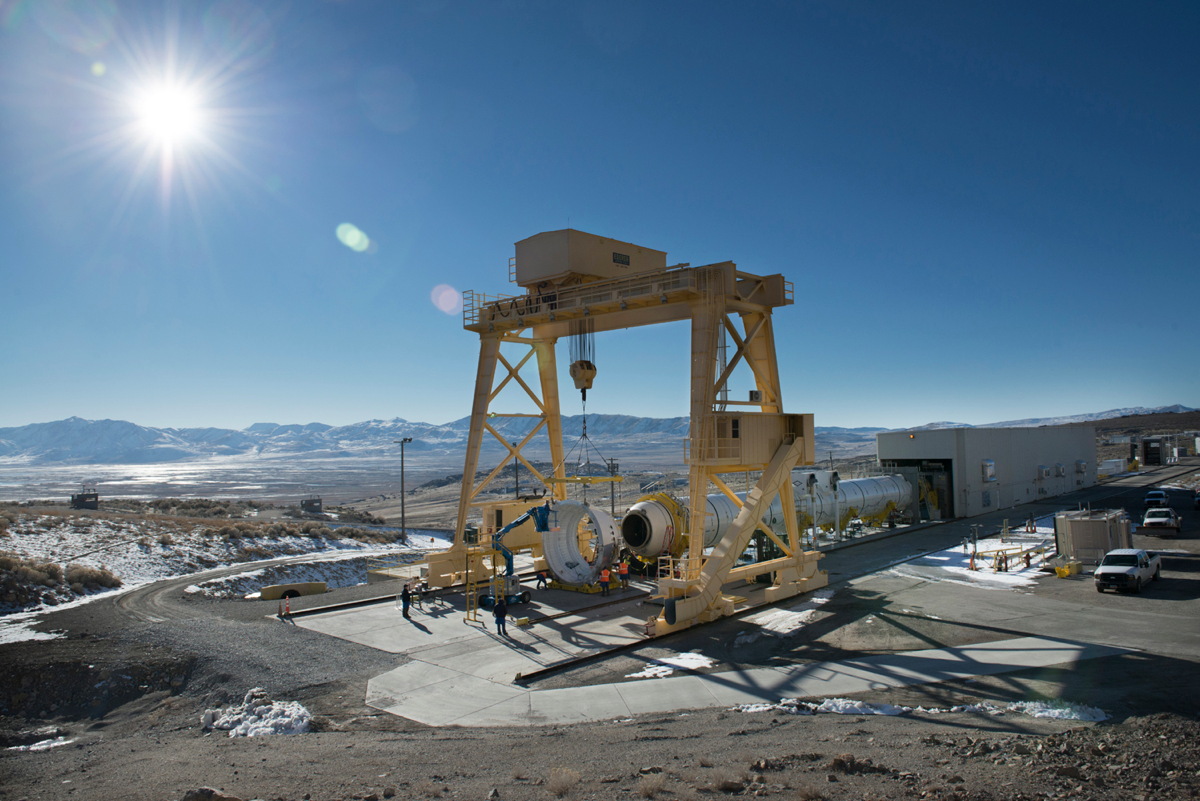
Space fans have no shortage of entertainment today (March 11), from morning to night.
NASA will test-fire the booster of its Space Launch System (SLS) megarocket today at 11:30 a.m. EDT (1530 GMT), and three astronauts will return to Earth from the International Space Station in the evening. You can watch the space action live on Space.com, courtesy of NASA TV.
The SLS rocket booster test takes place at the facilities of aerospace firm Orbital ATK in Promontory, Utah, with webcast coverage beginning at 11 a.m. EDT (1500 GMT). There will be no spaceflight involved: Engineers will fire the 177-foot-long (54 meters) booster for two minutes on the ground, in a horizontal configuration. [NASA's Space Launch System in Pictures]
"What's impressive about this test is, when ignited, the booster will be operating at about 3.6 million pounds of thrust, or 22 million horsepower," Alex Priskos, manager of the SLS Boosters Office at NASA's Marshall Space Flight Center in Huntsville, Alabama, said in a statement. "This test firing is critical to enable validation of our design."
Another booster test is planned for early 2016, NASA officials said.
The SLS will incorporate two of the five-segment boosters, as well as four RS-25 engines, on its first two flights, which will be capable of lofting 70 metric tons of payload to low-Earth orbit (LEO). NASA intends to scale the rocket up to deliver 130 metric tons to LEO, to enable manned missions to faraway destinations such as Mars. The first SLS flight is currently scheduled for 2018.
This evening, NASA astronaut Barry "Butch" Wilmore and Russian cosmonauts Alexander Samokutyaev and Elena Serova will wrap up their nearly six-month-long mission aboard the International Space Station and come back down to Earth.
Get the Space.com Newsletter
Breaking space news, the latest updates on rocket launches, skywatching events and more!
The trio is scheduled to depart the orbiting lab in their Soyuz capsule at 6:44 p.m. EDT (2244 GMT) and land in the central Asian nation of Kazakhstan at 10:07 p.m. EDT (0207 GMT on March 12).
Undocking coverage lasts from 6:15 p.m. to 7:30 p.m. EDT (2215 to 2330 GMT), while landing coverage is scheduled to run from 9 p.m. to 11 p.m. EDT (0100 to 2300 GMT on March 12), NASA officials said.
Wilmore, Samokutyaev and Serova arrived at the space station on Sept. 25, 2014. Wilmore served as commander of the orbiting lab's Expedition 42, which formally ends upon the trio's departure. NASA astronaut Terry Virts will head Expedition 43.
Virts, Russian cosmonaut Anton Shkaplerov and European spaceflyer Samantha Cristoforetti will have the station to themselves until March 27, when three colleagues are scheduled to join them. Two of those three newcomers, NASA's Scott Kelly and Russian Mikhail Kornienko, will become the first people to stay aboard the orbiting lab for one year continuously.
And as if that weren't enough, NASA is also gearing up for the launch of four new satellites on Thursday night, March 12, to study a strange phenomenon in Earth's magnetic field known as magnetic reconnection. Today at 1 p.m. EDT (1700 GMT), NASA will hold a science briefing for reporters and the public to discuss the so-called Magnetospheric Multiscale mission.
Visit Space.com today to follow all of today's amazing space events and for full coverage of the SLS booster test and space station crew landing.
Follow Mike Wall on Twitter @michaeldwall and Google+. Follow us @Spacedotcom, Facebook or Google+. Originally published on Space.com.
Join our Space Forums to keep talking space on the latest missions, night sky and more! And if you have a news tip, correction or comment, let us know at: community@space.com.

Michael Wall is a Senior Space Writer with Space.com and joined the team in 2010. He primarily covers exoplanets, spaceflight and military space, but has been known to dabble in the space art beat. His book about the search for alien life, "Out There," was published on Nov. 13, 2018. Before becoming a science writer, Michael worked as a herpetologist and wildlife biologist. He has a Ph.D. in evolutionary biology from the University of Sydney, Australia, a bachelor's degree from the University of Arizona, and a graduate certificate in science writing from the University of California, Santa Cruz. To find out what his latest project is, you can follow Michael on Twitter.









